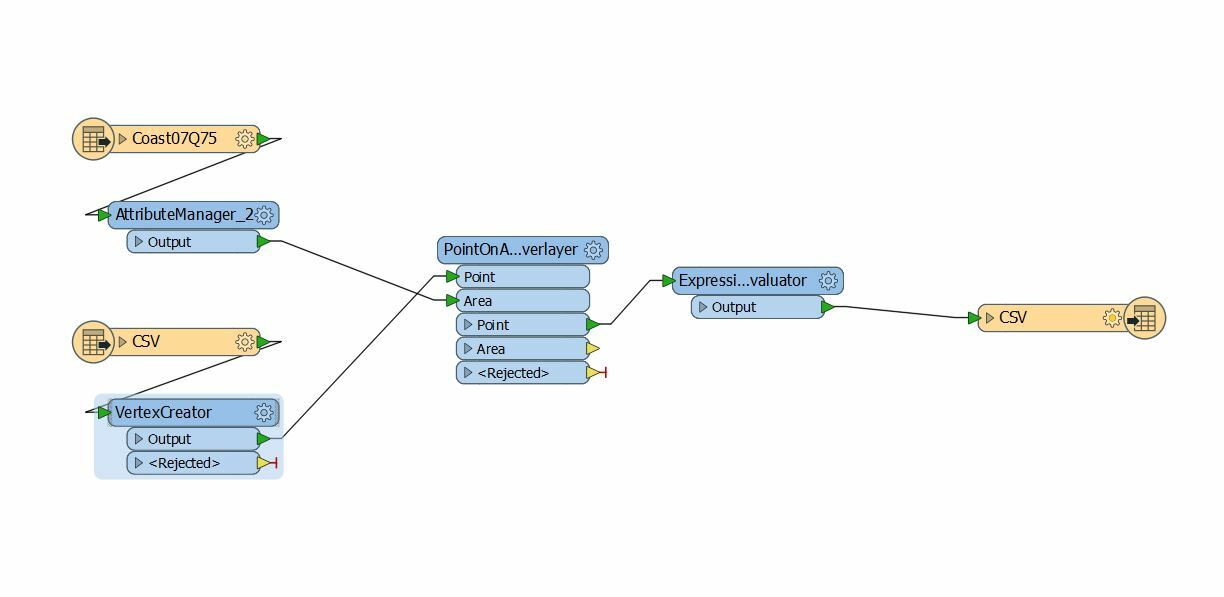Hello,
I have a huge amount of points within a country (>33 Million) which represents addresses. [1 csv file of size > 2GB with lat/lon information] and I also have a PolygonS Area (>5k) which covers a number of area location. [multiple .tab files] I need to get the number of points within each polygon area. Here's the workflow information : 1. Added a reader to read the polygon layer from the MapInfo files (top most in the Navigator). 2. Added a reader to read the 33 million points (Splitted into 2 csv files). 3. Adding attribute manager to manage the attributes in polygon reader. 4. Created point geometries through CSV reader parameter setting or the VertexCreator. 5. Used a PointOnAreaOverlayer transformer, sending the polygons to the Area port and points to the Point port,("Yes" to the Area First parameter) 6. Adding Expression Evaluator to evaluate the pointonarea funcion. 7. Connecting point output from the point port having "_overlaps" attribute which stores the number of inside points. So, I tried the processing using Pointonareaoverlayer but the problem is that output file containing no. of Points within that polygon are different from the previous method having huge difference of 600 points. Is there a reason why am I getting such kind of errors. Am I missing anything important? Thanks in advance, Kind Regards, Mridu
@mridu_prakash












